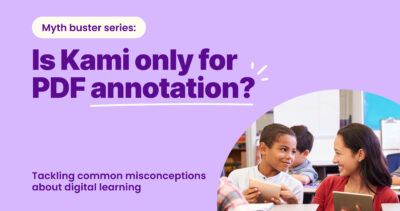
Yue Hu
A research-backed look at how digital tools are (and aren’t) supporting our most vulnerable learners
Following hot-on-the-heels of our recent ‘Educator insights survey’, I’m delighted to share our latest research: a deep-dive into educators’ perspectives about SPED and ELL tech.
In early 2025, we surveyed 469 K–12 educators across the U.S. and more than 50 countries to better understand how SPED and ELL tools are functioning in real classrooms. Their responses form the foundation of this report—an honest look at what’s working, what isn’t, and what needs to change.
This executive summary offers a snapshot of the key findings. For deeper insights, quotes, and recommendations, we invite you to explore the full report here.
SPED and ELL tools today: A damning indictment
Despite growing attention and innovation in educational technology, many SPED and ELL educators say the tools available today are falling short—both in effectiveness and equity.
More than half of those surveyed said the digital tools in their classrooms do not fully support the accommodations outlined in IEPs and 504 Plans. While these tools are often marketed as inclusive, educators report that they require constant troubleshooting, lack flexibility, and demand significant teacher intervention just to function day to day.
52% of educators say their current tools do not meet IEP and 504 Plan requirements.
Even when better tools do exist, access remains a challenge. The most frequently cited barrier was cost. With limited budgets, many educators are left having to use basic or free versions of relevant tools that lack the features students need to thrive.
80% of educators say cost limits their access to effective SPED and ELL tools.
In an echo of other recent survey findings by Kami, artificial intelligence (AI) was a source of both excitement but also concerns and ‘unknowns’.
On the plus side, AI is seen as a potential game-changer for simplifying content, adapting instruction, and supporting students with language or processing differences.
However, nearly half of respondents reported that current AI features available to them fall short—especially in content modification and text-to-speech quality.
Meanwhile, core accessibility features continue to underperform. Educators describe tools that don’t recognize dialects or multilingual input, lack cultural context, or are simply unreliable during daily instruction. These aren’t just technical glitches, they’re barriers to learning.
Finally, many educators feel boxed in by procurement decisions that don’t reflect their classroom realities. More than half say they’re locked into tools selected by administrative colleagues, with little flexibility to choose options that better support their students.
What these findings make undeniably clear is that there’s no shortage of tools—only a shortage of tools that truly work for every learner. As we look ahead, the opportunity isn’t just to build more technology. It’s to build smarter, more inclusive, and more affordable solutions that remove friction, reduce strain, and actually empower learning.
At Kami, this is the work that drives us every day. We’re committed to listening to educators, learning from their experiences, and building alongside them. The future of SPED and ELL support depends on all of us working together—with clarity, urgency, and heart.
For more insights and educator voices, we invite you to explore the full report.
kamiapp.com/state-of-sped-and-ell-report/
— Hengjie Wang, CEO, Kami
You may also like

Educator insights survey 2025

Leadership Insights: Reflections from CUE 2025

